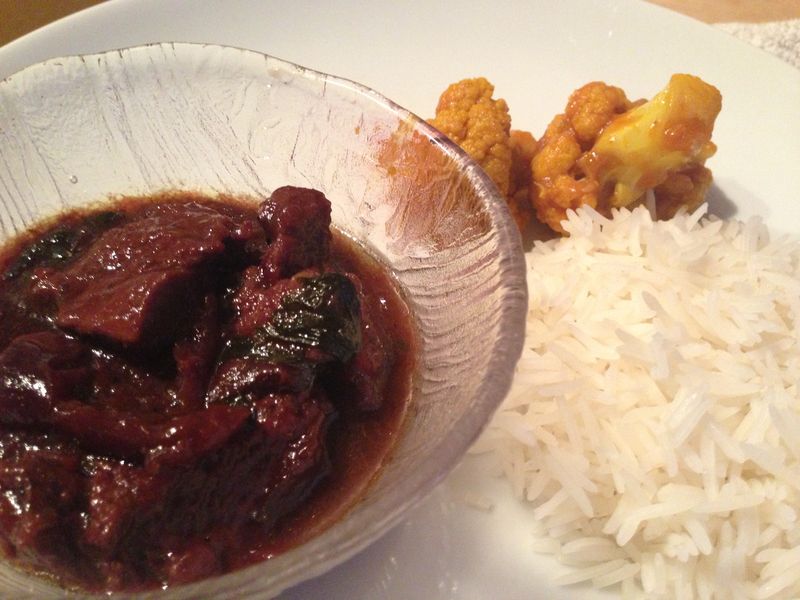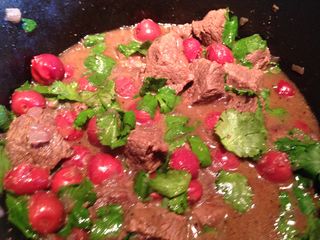Afghan Lamb in Cherry Sauce with rice and cauliflower
Your comments are welcome!
By Humaira
It's not every day when lamb meets cherries in a pot. In the case of today's recipe, Qorma e Aloo Baloo, the end result is a symphony of sweet and sour delight for your taste buds.
After 33 years of living in the United States, I still remember cherry season in Afghansitan, when my mom’s cousin would deliver boxes of cherries to our home. Jeja, my mom, would get busy making jams and cherry juice before the lot went bad.
My younger brother and I would secretly stuff our faces with fresh cherries before we were found out and banished from the kitchen.
In memory of those days I have previously shared a Cherry, Garlic and Yogurt side dish, the wildly popular Bubbly Cocktail with Cherry Syrup and Humaira's Whirling Cherry Cocktail.
Afghan street vendor selling cherries
My creations are not always welcomed by my children. They live in fear of the next recipe, and the “strange” dish that will be presented at dinner. I was convinced that the rich taste of slow cooked lamb and the sweet cherry sauce would not be popular. But, to my surprise, I got two thumbs up.
Generally I find sweet and sour dishes overwhelming. so I served this with a side of braised cauliflower, Gulpea and Afghan white rice, Challaw which was just the right combination of sweet and savory. This dish will also go well with a side of fresh salad or yogurt.
My sister Nabila made this dish with beef over the holidays. Of course I tweaked what created and discovered the lamb works well too. I hope you like this dish and I welcome your thoughts in the comment section of this post.
Qorma-e-Aloo Baloo
Lamb in Cherry Sauce
2 tablespoons olive oil
1 yellow onion diced
1 pound boneless lamb stew, cut in bite size pieces
1 tablespoon ground coriander
1 1/2 teaspoon salt
½ teaspoon black pepper
1/4 teaspoon cayenne pepper
24.7 oz. jar of dark Morello cherries in light syrup from Trader Joe’s
1 cup loosely packed cilantro leaves
Note: If you are not near a Trader Joe’s, you may use two cups of any type of canned or frozen sour cherries. If you are not a fan of lamb, just substitute beef stew meat. It is equally delicious.
Add olive oil in a heavy bottomed pot with lid, place on medium high heat. Add diced onions to the pot and sauté for 3 minutes or, until the onions are translucent. Save 1/2 cup of cherry syrup from the jar and drain the cherries in a colander.
Wash meat thoroughly; pat dry with a paper towel before adding to the pot. Sprinkle the coriander on the meat, stir well and cook on medium high for five minutes or until the meat is browned. Add the cherry juice, turn the heat down to low, cover with the lid and simmer for 45-50 minutes, stirring every ten minutes.
Just added cherries and cilantro to the pot
Once the sauce thickens add the cherries, cilantro, salt, black pepper and cayenne pepper. Stir well and simmer for 20 minutes without lid.
Serve with challaw rice and a side of salad or yogurt.
Your comments are welcome!
Related articles














